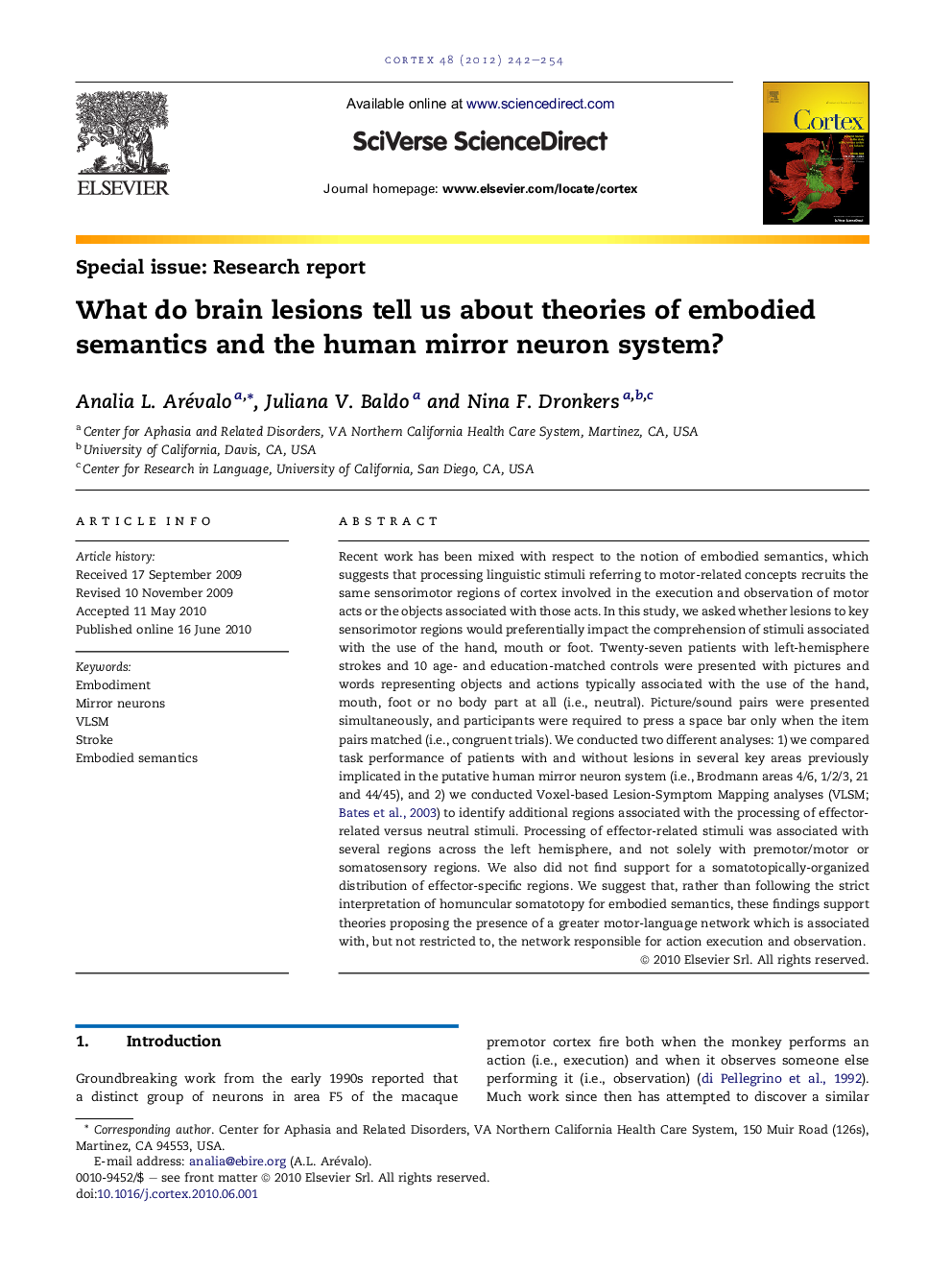| کد مقاله | کد نشریه | سال انتشار | مقاله انگلیسی | نسخه تمام متن |
|---|---|---|---|---|
| 942204 | 925117 | 2012 | 13 صفحه PDF | دانلود رایگان |

Recent work has been mixed with respect to the notion of embodied semantics, which suggests that processing linguistic stimuli referring to motor-related concepts recruits the same sensorimotor regions of cortex involved in the execution and observation of motor acts or the objects associated with those acts. In this study, we asked whether lesions to key sensorimotor regions would preferentially impact the comprehension of stimuli associated with the use of the hand, mouth or foot. Twenty-seven patients with left-hemisphere strokes and 10 age- and education-matched controls were presented with pictures and words representing objects and actions typically associated with the use of the hand, mouth, foot or no body part at all (i.e., neutral). Picture/sound pairs were presented simultaneously, and participants were required to press a space bar only when the item pairs matched (i.e., congruent trials). We conducted two different analyses: 1) we compared task performance of patients with and without lesions in several key areas previously implicated in the putative human mirror neuron system (i.e., Brodmann areas 4/6, 1/2/3, 21 and 44/45), and 2) we conducted Voxel-based Lesion-Symptom Mapping analyses (VLSM; Bates et al., 2003) to identify additional regions associated with the processing of effector-related versus neutral stimuli. Processing of effector-related stimuli was associated with several regions across the left hemisphere, and not solely with premotor/motor or somatosensory regions. We also did not find support for a somatotopically-organized distribution of effector-specific regions. We suggest that, rather than following the strict interpretation of homuncular somatotopy for embodied semantics, these findings support theories proposing the presence of a greater motor-language network which is associated with, but not restricted to, the network responsible for action execution and observation.
Journal: Cortex - Volume 48, Issue 2, February 2012, Pages 242–254